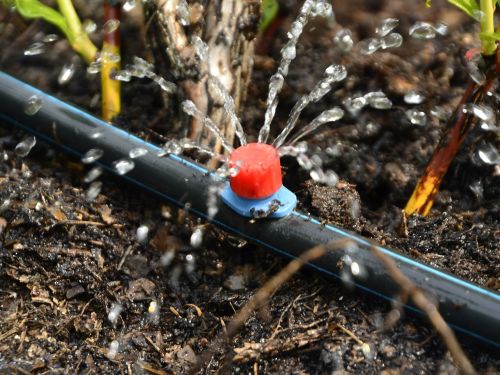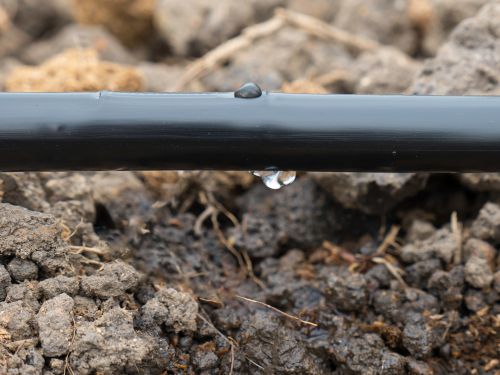A well-designed drip irrigation system is one of the best ways to maintain a thriving desert garden while conserving water. In hot, arid climates, every drop counts—and drip irrigation delivers moisture directly to plant roots where it’s needed most. However, even a carefully installed system can fail to perform efficiently if common mistakes go unnoticed. Understanding how to set up, maintain, and troubleshoot your system will ensure your plants stay healthy and your water bill stays low.

Why Drip Irrigation is Ideal for Desert Gardens
Unlike traditional sprinklers that spray water across a wide area, drip irrigation provides slow, targeted watering. This minimizes evaporation, runoff, and soil erosion—problems that are magnified in desert environments. The system works through a network of tubes, emitters, and connectors that release controlled amounts of water directly into the soil.
For desert gardeners, drip irrigation is especially effective for:
Native and drought-tolerant plants that require deep, infrequent watering
Rock gardens and xeriscapes with minimal soil coverage
Raised beds and containers, where overwatering is common
When designed properly, drip systems can reduce water use by up to 50% compared to overhead sprinklers.
Call Desert Environments Today
Let’s Build Your Desert Oasis
Common Drip Irrigation Mistakes and How to Fix Them
Even with its advantages, drip irrigation in desert landscapes requires attention to detail. Here are the most common mistakes homeowners make, along with solutions to keep your system working efficiently.
Overwatering Plants
Many people assume desert plants need frequent watering, but the opposite is true. Overwatering suffocates roots, encourages fungus, and attracts pests like gnats and root rot pathogens.
How to Fix
- Water deeply but infrequently—typically once or twice a week, depending on the season.
- Check soil moisture 4–6 inches below the surface before watering.
- Use a timer with adjustable settings for seasonal changes.
Incorrect Emitter Placement
Emitters that are too close to the plant base can cause rot, while those too far away may not reach the root zone.
How to Fix
- Place emitters near the plant’s drip line—the outer edge of the leaf canopy where roots are most active.
- As plants grow, adjust emitter positions outward to follow expanding root systems.
- For trees and large shrubs, install multiple emitters evenly spaced around the drip line.
Using the Wrong Type of Emitter
Not all emitters are the same. Using a single flow rate for every plant ignores individual water needs.
How to Fix
- Match emitter flow rates to plant types.
- 0.5 GPH (gallons per hour) for small succulents and cacti
- 1 GPH for perennials and shrubs
- 2–4 GPH for trees or large, deep-rooted plants
- Label emitters during installation for easy identification and maintenance.
Clogged Emitters and Lines
Mineral buildup, dirt, or algae can clog emitters and tubing, restricting water flow or causing uneven watering. This issue is common in hard-water desert regions.
How to Fix
- Flush the system monthly by opening the end caps to clear sediment.
- Soak clogged emitters in a mild vinegar solution to dissolve mineral deposits.
- Install a filter at the water source and clean it regularly.
- Avoid algae growth by covering exposed tubing to prevent sunlight penetration.
Neglecting System Maintenance
A drip system isn’t “set it and forget it.” Over time, leaks, blockages, and shifting soil can affect performance.
How to Fix
- Inspect your system monthly for leaks, damaged tubing, or misaligned emitters.
- Replace worn-out connectors and tighten fittings as needed.
- In extremely hot climates, use UV-resistant tubing to prevent cracking.
- During colder months, flush and cap the system to protect it from freezing.
Failing to Adjust for Weather Changes
Drip systems must adapt to temperature and seasonal changes. In cooler months, plants require far less water, while summer heat demands more frequent watering.
How to Fix
- Adjust timer settings every few months or install a smart controller that automatically modifies watering schedules based on weather.
- Use mulch or gravel around plants to help retain soil moisture and reduce surface evaporation.
Best Practices for Efficient Drip Irrigation in Desert Yards
- Plan Zones Carefully: Group plants by water needs to avoid overwatering drought-tolerant varieties.
- Monitor Water Pressure: Drip systems work best at 20–30 PSI; anything higher can cause leaks or uneven flow.
- Test Regularly: Run your system for a few minutes to ensure all emitters are functioning properly and providing even coverage.
Remember, drip irrigation is an investment in the long-term health of your desert garden. When installed and maintained correctly, it helps conserve water, reduce weeds, and promote strong root systems—keeping your landscape vibrant even under the harshest sun.

